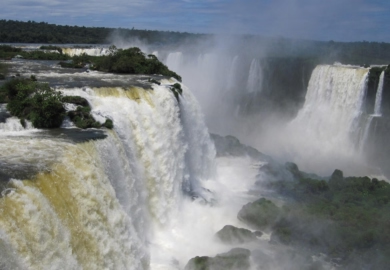Table of Contents
No matter, if you’re a tourist, traveler, or simply an admirer of the historical beauty of our world – UNESCO World Heritage Sites, are awe-inspiring destinations breathtaking to behold. From undiscovered cultural gems to long-standing architectural masterpieces, these locations represent the history and culture of their respective countries in stunning detail – and provide travelers with unforgettable experiences.
World Heritage Sites
A UNESCO-designed recognition of remarkable sites, they encompass locations of outstanding value both from a natural point of view, such as forests or rivers, as well as examples with historical importance or spiritual significance. From mountain ranges in Argentina’s Los Glaciares National Park to magnificent Hindu temples in India’s Group of Monuments at Hampi, read on to find out what makes these places different – and why they deserve special attention.
Let’s explore the 25 most famous UNESCO World Heritage Sites:
The Great Wall of China

The Great Wall of China is a marvel of engineering and a testament to the ancient Chinese civilization’s incredible determination and commitment to security. This formidable structure stretches over 13,000 miles across China’s northern border, and its construction commenced in the 7th century BC. Over the centuries, various Chinese dynasties added to the wall, making it one of the world’s most extensive military fortifications. Did you know that the Great Wall is a series of walls and towers, rather than one continuous wall? Despite its impressive length, the wall couldn’t keep invading armies at bay, but it remains a symbol of China’s rich history and is a top tourist attraction to this day.
⭐ Information: Tours | Hotels | UNESCO site
Taj Mahal, India
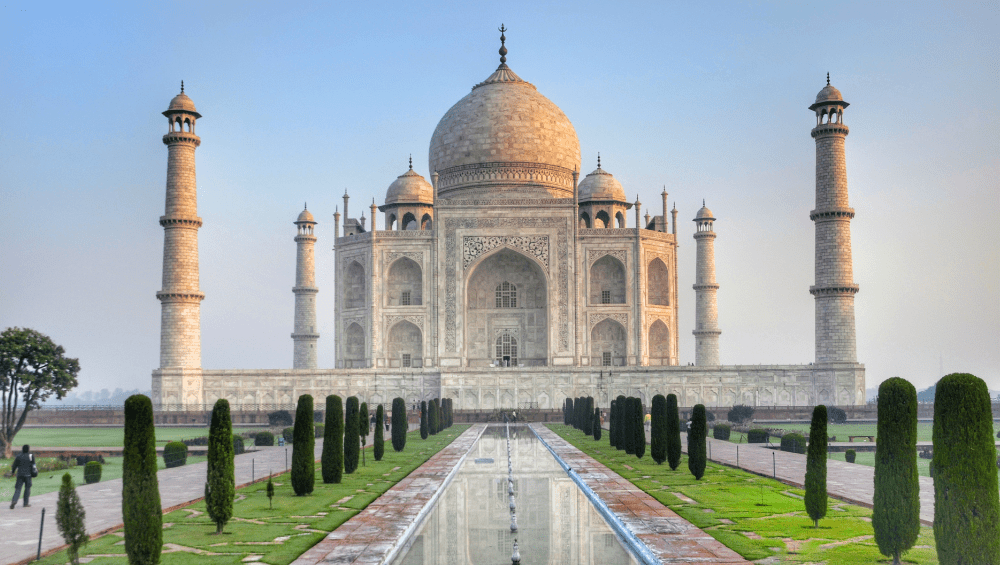
The Taj Mahal, located in Agra, India, is one of the most recognizable landmarks in the world. This magnificent mausoleum was commissioned by Mughal Emperor, Shah Jahan, in memory of his beloved third wife, Mumtaz Mahal. The Taj Mahal is renowned for its intricate white marble architecture and the impressive size of its dome. The complex also includes stunning gardens and reflecting pools, complete with water channels and fountains. Visitors are often awed by the sheer beauty and grandeur of this impressive structure, which continues to inspire millions of people worldwide. Although it was completed over three centuries ago, the Taj Mahal remains one of the most impressive architectural feats in human history, a true testament to man’s creativity and ingenuity.
⭐ Information: Tours | Hotels | UNESCO site
Machu Picchu, Peru

Machu Picchu, one of the most stunning architectural wonders of the world, is nestled in the heart of the Andes Mountains in Peru. This ancient Incan citadel, believed to have been built in the mid-15th century, is shrouded in mystery and attracts thousands of visitors every year. Despite being abandoned for centuries, Machu Picchu continues to stand tall, mirroring the impressive engineering skills of the Inca civilization. Surrounded by breathtaking landscapes, the ruins evoke a sense of enchantment and serenity that can hardly be put into words. It’s no wonder why this UNESCO World Heritage site is considered a bucket-list destination, and once you visit this awe-inspiring place, you’ll see why.
⭐ Information: Tours | Hotels | UNESCO site
Angkor Wat, Cambodia

Angkor Wat is a spectacular example of Khmer architecture and engineering prowess. Located in Siem Reap, Cambodia, this ancient temple complex was built during the height of the Khmer Empire, which ruled for over 600 years from the 9th to the 15th century CE. Despite facing natural disasters and political turmoil, the temple complex still stands today as a testament to the incredibly advanced society that once thrived in Cambodia. The temple’s intricate carvings, towering spires, and vast courtyards are truly awe-inspiring and a sight to behold. As one of the largest religious monuments in the world, Angkor Wat continues to draw visitors from all corners of the globe who come to marvel at its beauty and learn more about the fascinating history of the Khmer Empire.
⭐ Information: Tours | Hotels | UNESCO site
Colosseum, Rome
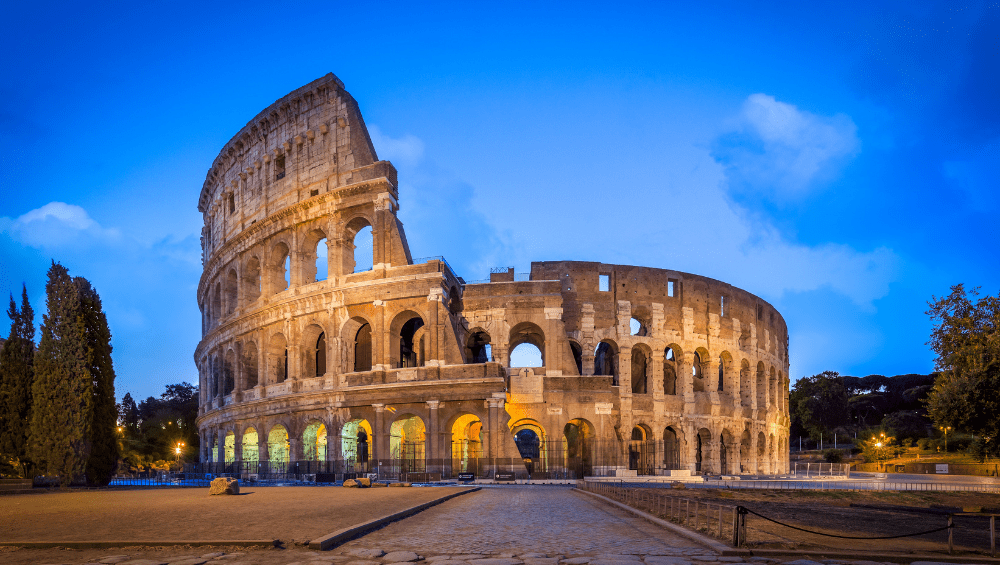
This massive amphitheater was constructed in AD 80-82 and could hold up to 50,000 spectators. It was primarily used for gladiatorial contests and public spectacles such as animal hunts, re-enactments of famous battles, and theatrical performances. Today, the Colosseum remains a testament to the incredible engineering and architectural prowess of ancient Rome. Its impressive size, intricate design, and rich history continue to draw tourists and scholars from around the globe. From the preserved underground chambers to the sweeping views of Rome from the top tier, the Colosseum offers a glimpse into a fascinating and tumultuous era of human history.
⭐ Information: Tours | Hotels | UNESCO site
Great Pyramid & Sphinx
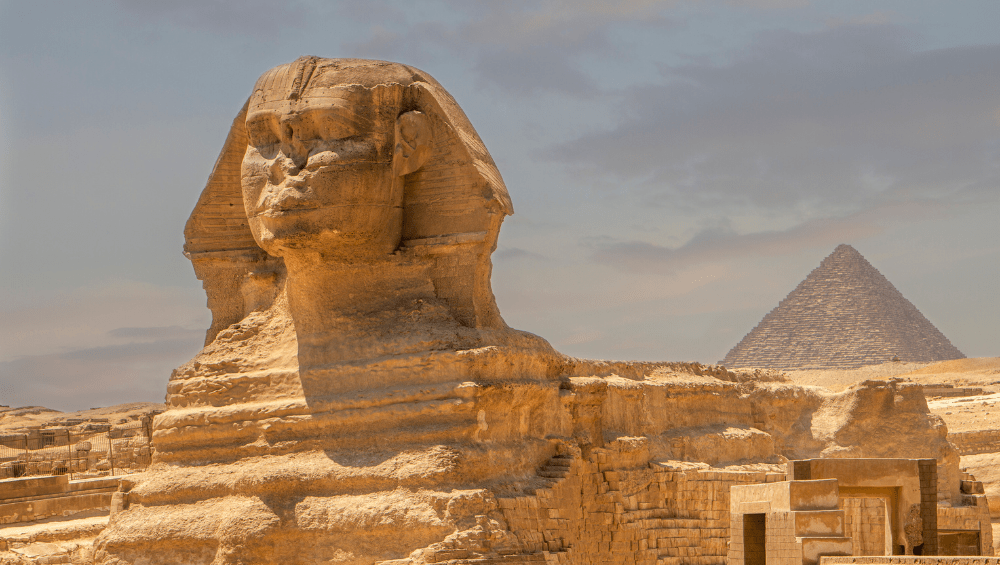
The Great Pyramid and Sphinx are two of the most iconic structures in Egypt’s history. The Great Pyramid, located in Giza, was constructed over 4,500 years ago and was considered one of the seven wonders of the world. It is a testament to the engineering and architectural prowess of ancient Egyptians, who managed to build a massive structure without modern tools and technology. Meanwhile, the Sphinx, which is situated at the base of the Giza plateau, is a colossal statue with the body of a lion and the head of a human. It has been the subject of many theories and legends over the years, but its purpose remains a mystery.
⭐ Information: Tours | Hotels | UNESCO site
Galapagos Islands
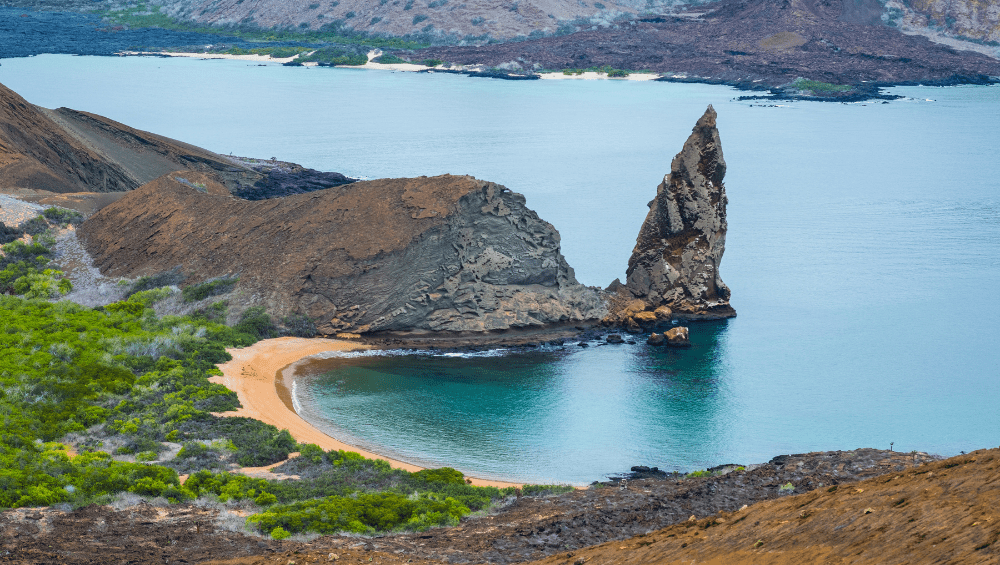
The Galapagos Islands are a marvel of evolutionary discovery. Located 1,000 kilometers off the coast of Ecuador, these volcanic islands are home to some of the most unique and diverse ecosystems on the planet. With species that can only be found on these islands – such as the Galapagos Tortoise, Marine Iguana, and Darwin’s finches – it is no wonder that the Galapagos Islands have played a crucial role in shaping our understanding of biology and natural selection. Thanks to conservation efforts, these islands have been preserved for generations to come to continue to inspire curiosity and wonder in the natural world.
⭐ Information: Tours | Hotels | UNESCO site
Petra, Jordan

Carved into the red rock cliffs of southern Jordan lies the ancient city of Petra, a marvel of human engineering and ingenuity. Dating back to the 4th century BC, Petra served as a critical hub for trade routes in the Middle East, making it a thriving center of commerce, culture, and architecture. With its stunning temples, tombs, and amphitheaters, Petra remains an impressive testament to the artistry and craftsmanship of its Nabataean inhabitants. As you wander through the winding alleyways and marvel at the intricacies of the rock-cut facades, you can’t help but feel humbled by the sheer scope of this imposing wonder of the ancient world. Petra truly stands as an engineering marvel to inspire generations of architects and engineers to come.
⭐ Information: Tours | Hotels | UNESCO site
Mesa Verde, Colorado
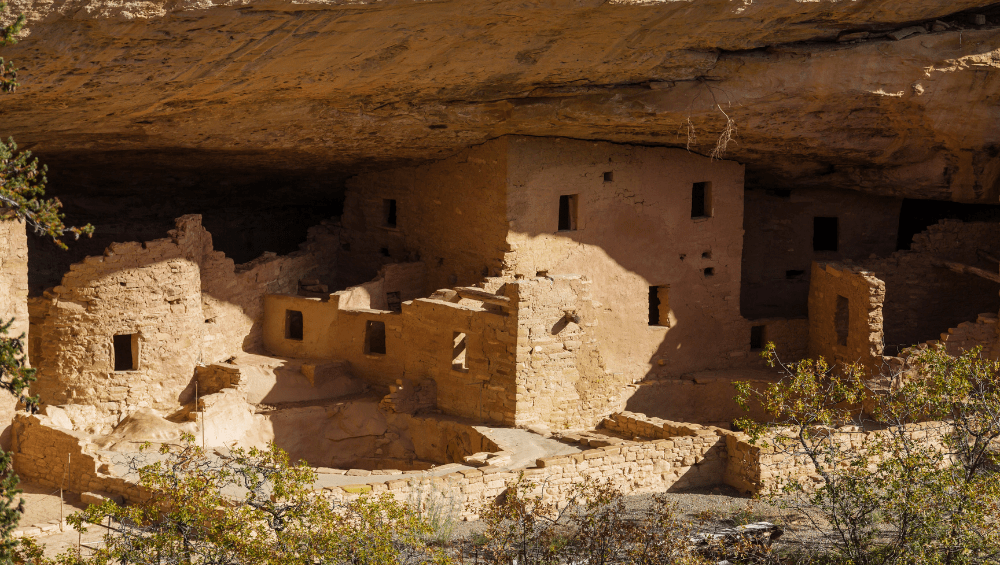
Mesa Verde National Park, located in southwestern Colorado, is a stunning testament to the ingenuity and cultural sophistication of the Ancestral Puebloan people. The park’s main attraction is The Cliff Palace, an impressive complex of dwellings built into the side of a cliff during the 12th century. These structures made up of over 150 rooms and 21 kivas, provide a glimpse into the daily life of the ancient people who called this place home. Beyond The Cliff Palace, Mesa Verde offers visitors the opportunity to explore other fascinating dwellings, both above and below ground. For those interested in history and archaeology, a visit to Mesa Verde is a must-see experience.
⭐ Information: Tours | Hotels | UNESCO site
Yellowstone National Park
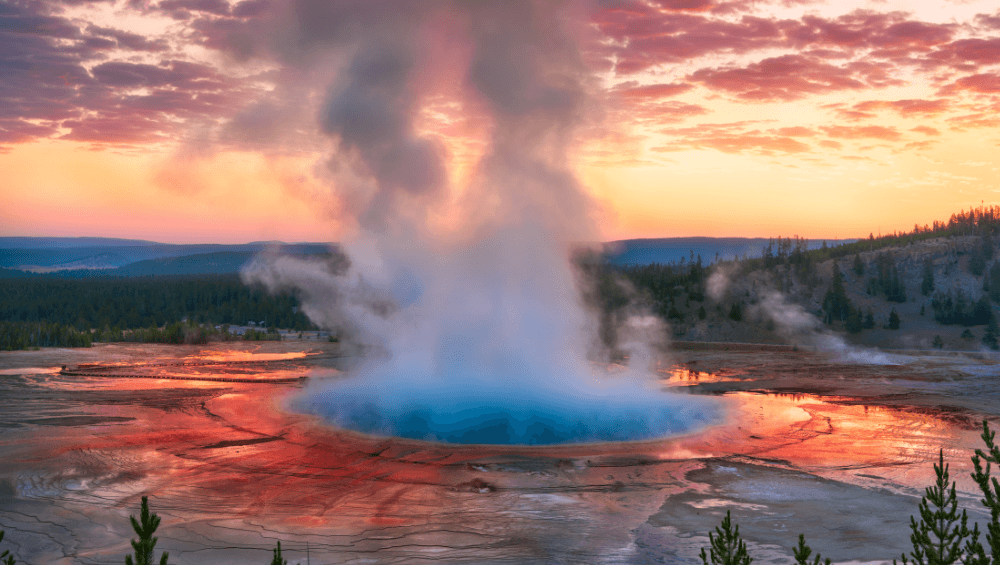
Yellowstone National Park is an incredible destination for travelers, where nature reigns. It is the world’s first national park and has been declared a UNESCO World Heritage Site. With its diverse geothermal features, breathtaking views, and incredible wildlife, it’s no wonder visitors flock to this grand old park every year. There truly is something for everyone here; from captivating hot springs to dramatic canyons, from herds of shaggy bison to packs of timid wolves, there are unique experiences waiting around every corner.
⭐ Information: Tours | Hotels | UNESCO site
Grand Canyon National Park
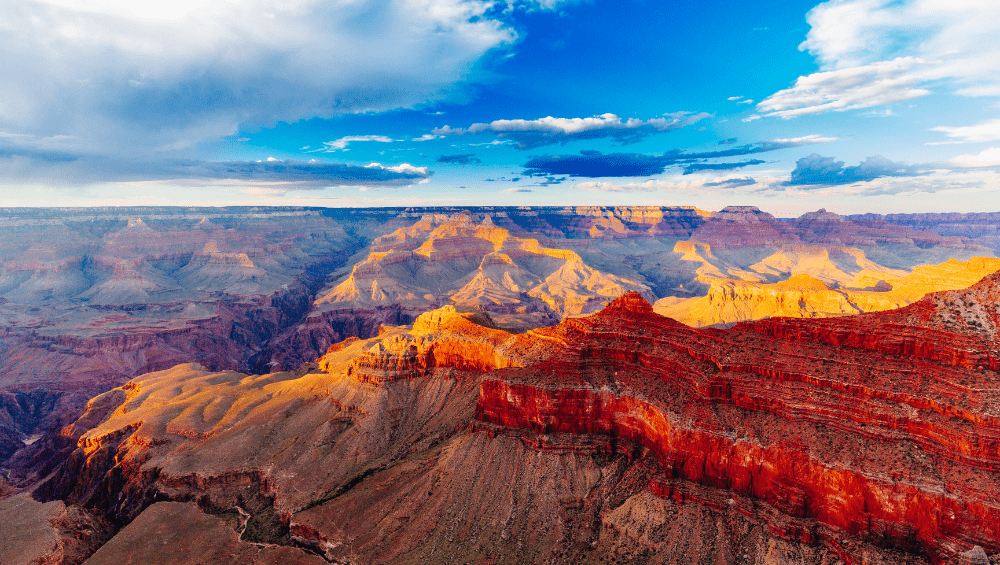
Grand Canyon National Park is a natural wonder that is well worth a visit for any fan of the outdoors. Located in Arizona, it is a marvel of natural beauty and geological significance. The park was established in 1919 and covers more than 1.2 million acres. It is home to the impressive Grand Canyon, which is over 270 miles long and up to 18 miles wide. This geological landmark features jaw-dropping views, with colorful rock formations and dramatic cliffs. Hiking trails offer stunning vistas, and the Colorado River provides a unique perspective of the canyon. Whether exploring for a day or a week, Grand Canyon National Park is an unforgettable destination that is sure to leave visitors in awe.
⭐ Information: Tours | Hotels | UNESCO site
Sagrada Familia, Spain

Sagrada Familia is one of the most beloved tourist attractions in Barcelona, Spain. Designed by famed Modernist architect Antoni Gaudi, the church is a masterpiece of Gothic and Art Nouveau styles. Construction of the Sagrada Familia began in 1882 and while it still remains unfinished, it is expected to be completed by 2026, exactly a century after Gaudi’s death. The church boasts stunning intricate facades, elaborate stained-glass windows, and soaring towers that command attention. Gaudi’s vision for the Sagrada Familia was to create a space that would inspire wonder and awe in all who enter it. And it has undoubtedly succeeded, drawing millions of visitors from around the world each year.
⭐ Information: Tours | Hotels | UNESCO site
Palace of Versailles, France
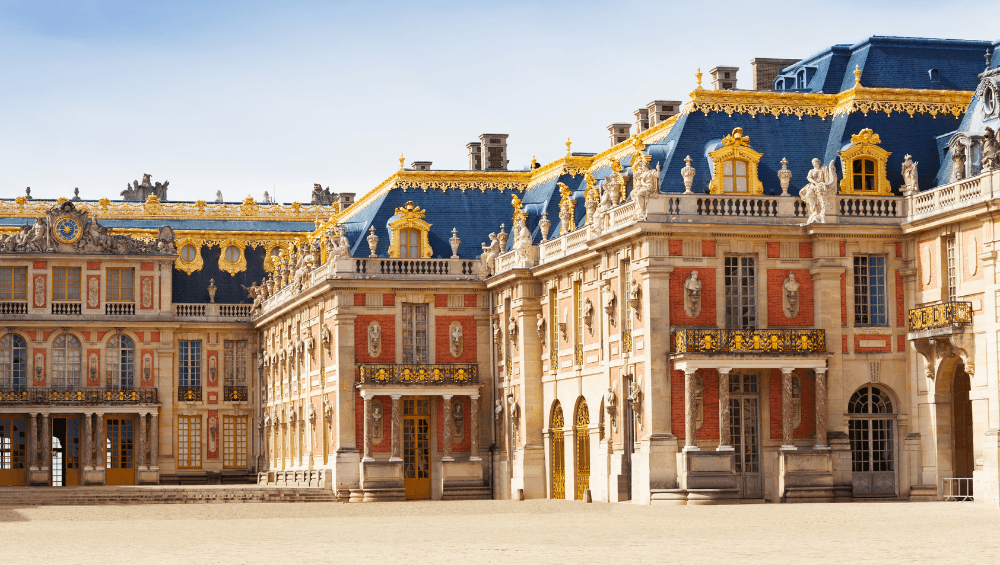
The Palace of Versailles, located just outside of Paris, is a magnificent example of French architecture and history. Originally built as a hunting lodge in the 17th century, it was later transformed into a palace by King Louis XIV. The palace boasts over 2,300 rooms, including the famous Hall of Mirrors, where the Treaty of Versailles was signed in 1919. The grounds of the palace are just as impressive as the palace itself, featuring perfectly manicured gardens, fountains, and sculptures. It is a truly breathtaking sight to behold and has become one of the most popular tourist attractions in France. The Palace of Versailles stands as a testament to the opulence and extravagance of the French monarchy during the 17th and 18th centuries.
⭐ Information: Tours | Hotels | UNESCO site
Mont Saint-Michel, France

Mont Saint-Michel, known as the “Pyramid on the Sea,” is one of France’s most iconic landmarks. This UNESCO World Heritage site has been a place of pilgrimage for centuries and continues to attract millions of visitors each year. Situated along the Normandy coast, Mont Saint-Michel has a rich history that dates back to the 8th century when Aubert, Bishop of Avranches, erected the first church on the island. Since then, the island has witnessed a tumultuous history, including being used as a prison during the French Revolution. Its stunning Gothic architecture and stunning location make it a must-see destination for anyone visiting France. A visit to Mont Saint-Michel is more than just a sightseeing trip; it’s a spiritual journey that transports you back in time to experience the beauty and majesty of medieval France.
⭐ Information: Tours | Hotels | UNESCO site
Acropolis, Greece
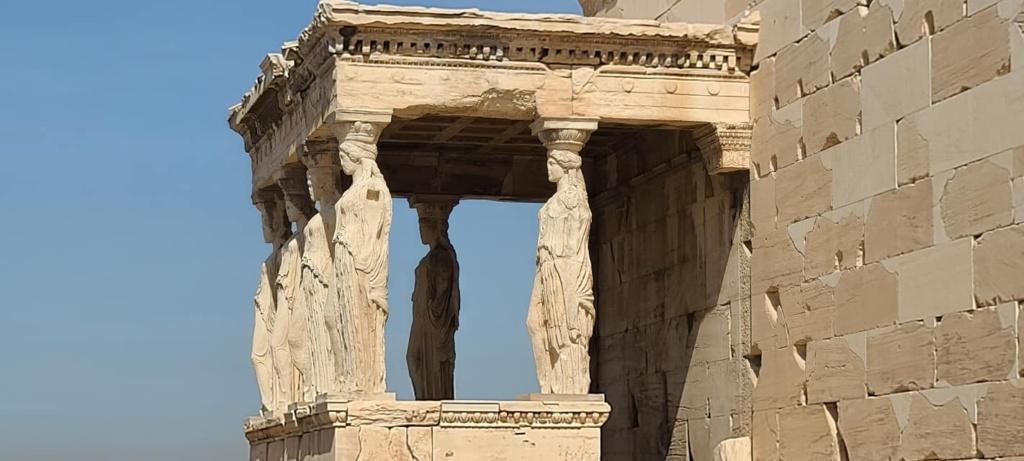
As one of the most famous ancient landmarks in the world, the Acropolis of Athens is an absolute must-see. This impressive structure dates back to the 5th century BCE and is situated on a hilltop overlooking the city of Athens. The Acropolis is home to several magnificent buildings, including the well-known Parthenon, which is recognized for its stunning architecture and historical significance. It’s truly awe-inspiring to stand in front of such an iconic piece of history and imagine what life would have been like for the ancient Greeks who once inhabited this area. If you’re looking to expand your knowledge of ancient civilization, the Acropolis of Athens is the perfect destination for you.
⭐ Information: Tours | Hotels | UNESCO site
Stonehenge, England
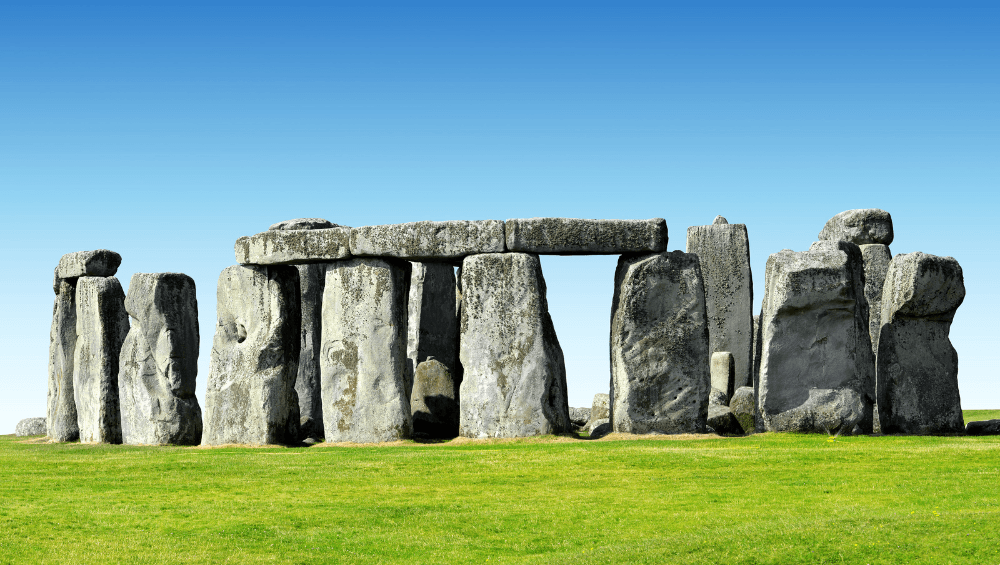
Stonehenge is an enigmatic prehistoric monument located in Wiltshire, England. This iconic site has piqued the curiosity of archaeologists, historians, and tourists alike for centuries. Made from towering stones that weigh up to 50 tons each, Stonehenge has been a mystery to scientists as to how it was constructed 4,500 years ago. Some researchers suggest that it was built as an astronomical observatory that could predict celestial events, while others think it was a religious site used for burials and rituals. Visiting Stonehenge is an awe-inspiring experience that leaves visitors marveling at the ingenuity and skill of our ancient ancestors.
⭐ Information: Tours | Hotels | UNESCO site
Great Barrier Reef, Australia

The Great Barrier Reef is not only the largest coral reef system in the world but also a natural wonder that fascinates scientists and tourists alike. This magnificent stretch of coral is located off the coast of Australia, covering an area of 344,400 square kilometers. Composed of over 2,900 individual reefs and 900 islands, the Great Barrier Reef is home to a diverse range of marine life, including over 1,500 species of fish, 215 species of birds, and 30 species of whales and dolphins. Sadly, the Great Barrier Reef is facing a major threat due to climate change and ocean acidification. As temperatures rise, so does the risk of coral bleaching, which can lead to the death of corals and the ecosystems that depend on them. Despite these threats, the Great Barrier Reef remains a place of immense beauty and importance, and efforts are being made to preserve and protect this precious natural wonder.
⭐ Information: Tours | Hotels | UNESCO site
Chichén Itzá, Mexico

Chichén Itzá, the ancient Mayan city located in the Yucatán Peninsula of Mexico, is a testament to the incredible advancements in architecture, astronomy, and mathematics achieved by the Mayan people. This awe-inspiring site is home to the famous El Castillo, a pyramid towering at an impressive 98 feet tall, and the sacred cenote, a natural well that was used for ceremonial offerings. The Mayan people utilized their knowledge of astronomy to align the architecture on the site with the movements of the sun, moon, and stars. The intricate stone carvings and sculptures found throughout the site showcase the Mayans’ incredible artistic abilities. There is no denying the sheer brilliance and ingenuity of Chichén Itzá, a true testament to the knowledge and skill of the ancient Mayan civilization.
⭐ Information: Tours | Hotels | UNESCO site
Easter Island, Chile

Easter Island, also known as Rapa Nui, is a small island located in the southeastern Pacific Ocean. It is most famously known for its mysterious giant stone statues called moai, which were carved by the island’s ancient Polynesian inhabitants between the years 1250 and 1500. Despite its small size, Easter Island has captured the imaginations of people around the world for centuries, as the moai statues have become symbols of both the island’s rich cultural heritage and its mysterious past. For those interested in history, anthropology, and archaeology, Easter Island is not to be missed.
⭐ Information: Tours | Hotels | UNESCO site
Pompeii, Italy
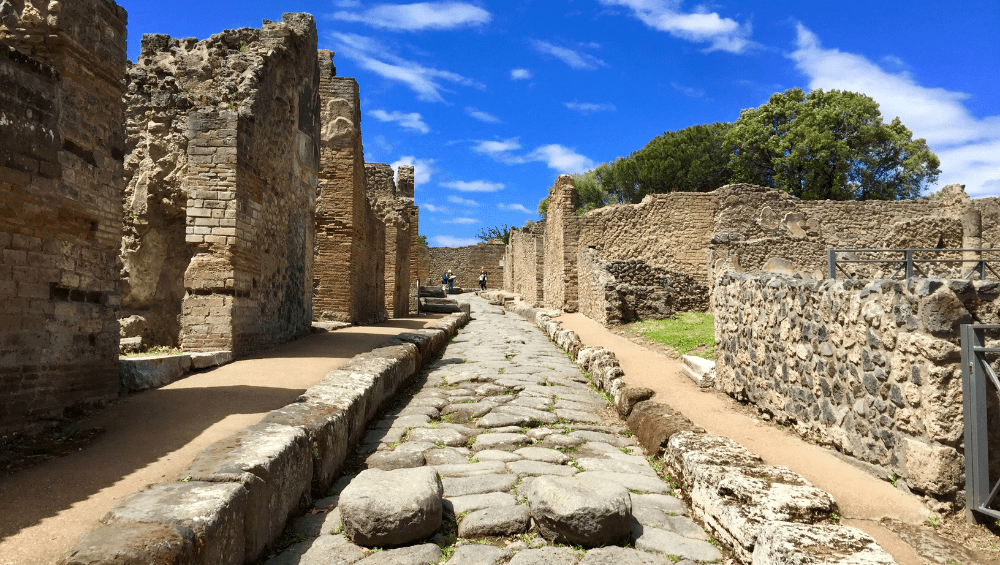
Pompeii is a city that is steeped in history and mystery. Buried under layers of ash and pumice for over 1,700 years after the eruption of Mount Vesuvius, the site is one of the best-preserved examples of a Roman city. The city was once a bustling commercial hub, evidenced by its well-preserved marketplace and amphitheater that could seat upwards of 20,000 people. However, it was also a place of luxury for Pompeii’s wealthy citizens, as evidenced by luxurious villas that boasted murals and intricate mosaics. Today, visitors can walk the same streets and explore the same buildings that were once the heart of Pompeii. It’s a fascinating journey back in time that offers a glimpse into what life was like in ancient Rome.
⭐ Information: Tours | Hotels | UNESCO site
Delphi, Greece
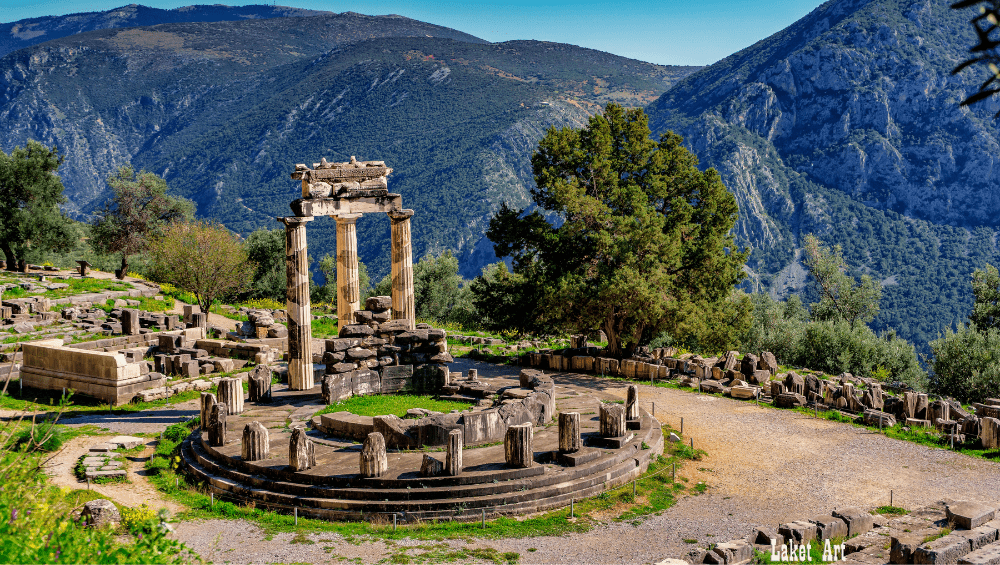
Delphi, a small town in Greece, is known as the ancient sanctuary of Apollo, the Greek god of music and light. This magnificent town was the home of the famous Oracle of Delphi, who was consulted by kings and commoners alike for advice on matters of the utmost importance. The Oracle of Delphi was believed to have the power of prophecy and in ancient times would give predictions about the future. The ancient Greeks considered Delphi to be the center of the world and its significance is still felt today. It is no wonder that Delphi is considered one of the most important archaeological sites in Greece. With its rich history and stunning scenery, Delphi is a must-see for anyone interested in ancient Greek culture.
⭐ Information: Tours | Hotels | UNESCO site
Meteora, Greece

Meteora is a breathtaking place located in Greece that stands out for its spectacular rock formations and breathtaking monasteries. This out-of-the-world natural beauty is sure to leave you awestruck with its impressive towering rocks standing almost 1,000 feet tall. The name Meteora itself means “suspended in the air” which rightfully depicts the beauty and enormity of the place. The ancient monasteries that can be found in Meteora are a symbol of strength, perseverance, and dedication of the monks who braved the difficult climb up the rocks to meditate and study in such an isolated location. Once you reach the top, the view is truly magical, and you can’t help but appreciate the power and beauty of nature in its wildest form. If you wish to experience the beauty that nature has to offer, Meteora is the place to be.
⭐ Information: Tours | Hotels | UNESCO site
Bagan, Myanmar

Bagan is a mystical destination in Myanmar that will leave you captivated by its ancient temples and awe-inspiring views. From the 9th to the 13th century, Bagan was the center of the Pagan Empire, and today, it has over 2,200 temples and stupas sprawled across the landscape. Each temple is a masterful work of art with ornate details and intricate carvings. The best way to immerse yourself in the culture of Bagan is to rent a bicycle and explore at your own pace. You’ll come across hidden temples, stunning sunrises over the Ayeyarwady River, and friendly locals that will make your time in Bagan unforgettable. There’s a certain magic to Bagan that will leave you feeling like you’ve traveled back in time.
⭐ Information: Tours | Hotels | UNESCO site
Leshan Giant Buddha, China
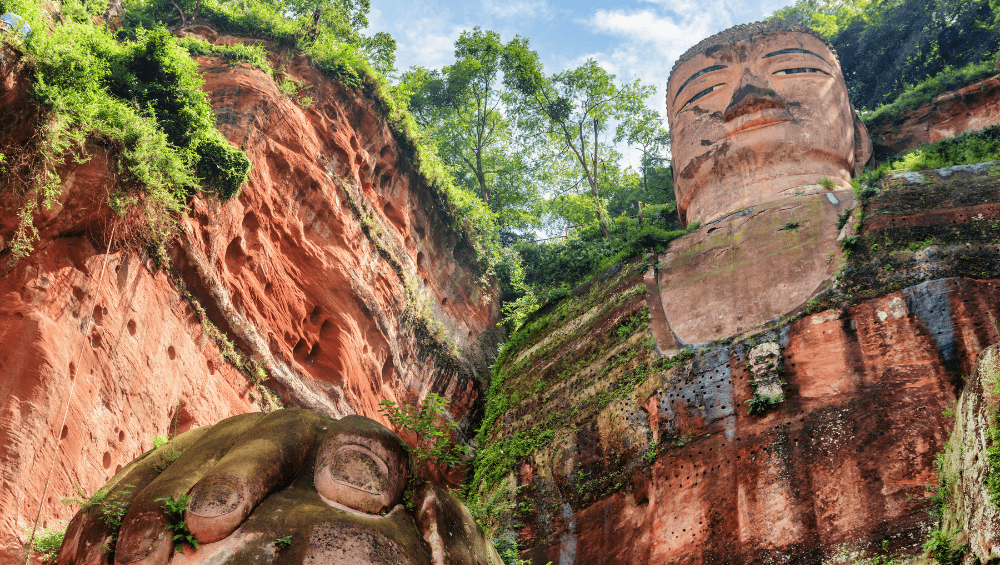
The Leshan Giant Buddha is a towering masterpiece of Buddhist art located in the Sichuan province of China. Standing at a staggering 71 meters tall, the statue is carved out of a single cliff face overlooking the junction of the Dadu and Min rivers. This UNESCO World Heritage Site was built during the Tang Dynasty (618-907) and has become a must-see attraction for tourists visiting China. Many visitors are awestruck by the intricate details of the statue, such as the stylized curls of the Buddha’s hair and the serene expression on his face. For those seeking a deeper understanding of Buddhism, the Leshan Giant Buddha is also a place of religious pilgrimage and spiritual reflection. Visiting the site is a humbling experience that can leave a lasting impression on anyone who is lucky enough to witness its grandeur.
⭐ Information: Tours | Hotels | UNESCO site
Forbidden City, Beijing

The Forbidden City, located in the heart of Beijing, has a rich history and cultural significance that has intrigued visitors for centuries. It was once the residence of emperors and imperial families during the Ming and Qing Dynasties and served as a political and ceremonial center for Chinese culture. The Forbidden City got its name because it was originally off-limits to the public, exclusively reserved for royalty and their staff. Today, it is open to all and is an iconic tourist destination, offering a glimpse into the opulence and grandeur of China’s imperial past. Its impressive architecture, stunning gardens, and remarkable collection of artifacts make it a must-see attraction for anyone visiting Beijing.
⭐ Information: Tours | Hotels | UNESCO site
Borobudur, Indonesia
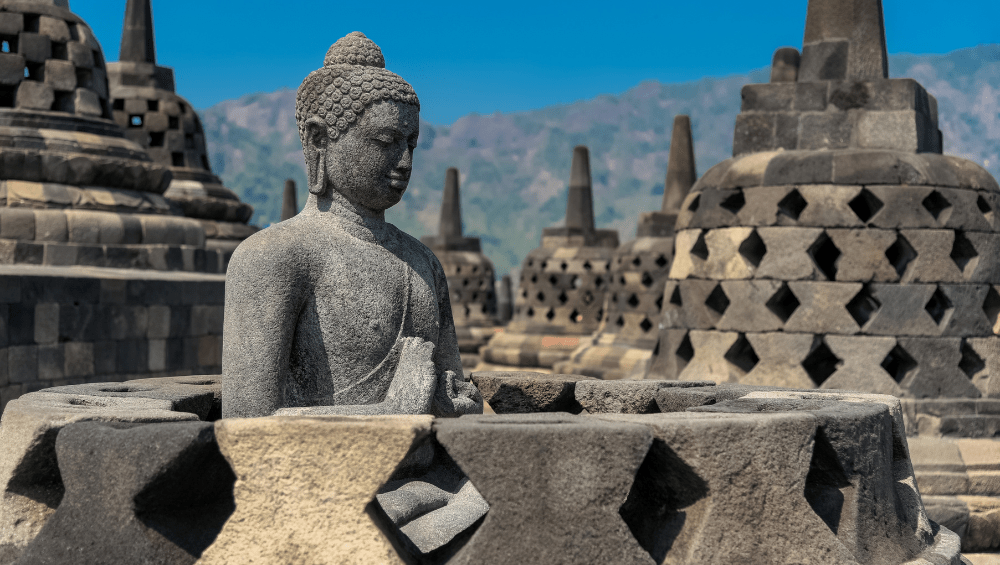
Borobudur is a masterpiece of Buddhist architecture and one of the most visited tourist attractions in Indonesia. Located on the island of Java, it is the world’s largest Buddhist temple and a UNESCO World Heritage site. Comprised of nine stacked platforms, the temple complex boasts 2,672 relief panels and 504 Buddha statues, which showcase the incredible attention to detail and skill of Javanese stonecutters. The story of the temple’s construction is still shrouded in mystery, but what is certain is that it took more than 75 years to complete. The intricate carvings and sacred symbolism throughout the temple make it a spiritual and cultural center for Indonesian people and visitors alike. Borobudur is an undeniable testament to the rich history and religious traditions of Indonesia, and its beauty is truly awe-inspiring.
⭐ Information: Tours | Hotels | UNESCO site
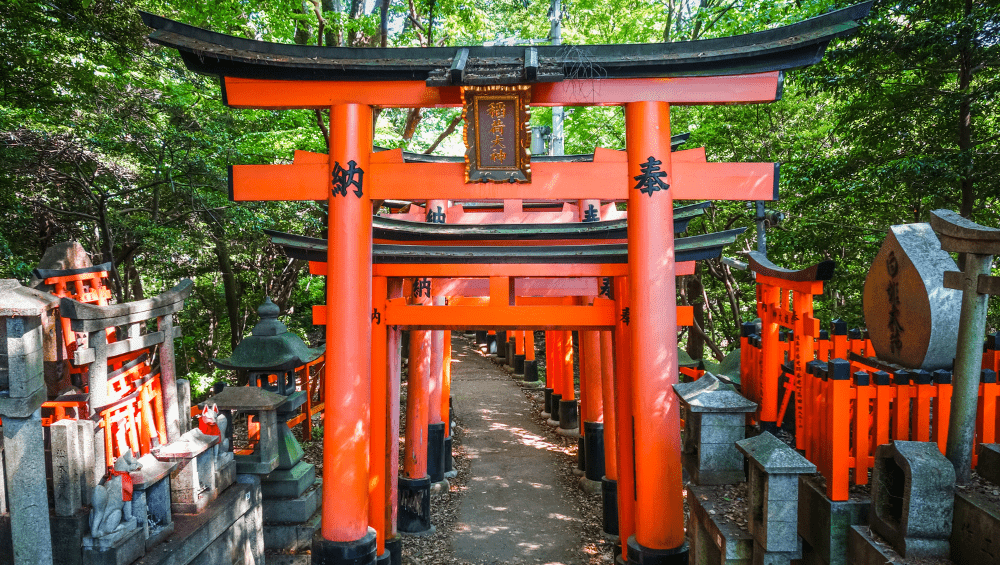
Traveling to UNESCO World Heritage Sites
Visiting UNESCO World Heritage Sites around the world is a fantastic way for travelers to learn about the rich history, culture, and beauty that these diverse and captivating destinations offer. From art and architecture to landscapes, monuments, ancient ruins, and more, each site affords a unique experience that will captivate any traveler. Every year new sites join this exclusive list of privileged places chosen by UNESCO to be internationally recognized as sites of “outstanding value to humanity”.
With so many tremendous options available all around the world, travelers have amazing opportunities to explore these iconic landmarks and discover the secrets they’ve held since before modern civilization was born. So get ready, pack your bags, and start planning your own unforgettable journey of discovery with the world’s most famous UNESCO World Heritage Sites.
UNESCO World Heritage FAQs
What makes a site a UNESCO World Heritage Site?
UNESCO World Heritage Sites are places deemed to have cultural and natural importance to the world. To make it into the coveted UNESCO list, many criteria are considered such as the site’s authenticity, cultural and natural significance, geographic location, and management. The site must have a unique and remarkable cultural or natural significance that surpasses a regular attraction. Its outstanding universal value must be recognized globally as a treasured and irreplaceable part of humanity. Managing a World Heritage site requires preservation and protection from human activities and natural disasters to ensure the site is available for generations to come. Being a UNESCO World Heritage Site is an enormous honor, and the recognition helps protect these unique places of importance for future generations.
What are UNESCO World Heritage Sites?
By preserving such heritage sites, UNESCO hopes to instill a sense of pride in people and encourage them to become actively involved in conservation efforts. These sites can be anything from iconic monuments to stunning landscapes to entire historic cities, each of which has contributed significantly to the world’s cultural heritage. However, these sites are not just a collection of stunning locations, but rather a living testament to our past, present, and future. Every UNESCO World Heritage Site holds a special place in history and plays a critical role in our collective memory.
How many UNESCO World Heritage Sites are there in the world?
There are over a thousand UNESCO World Heritage Sites scattered across the globe, each with significant cultural or natural importance that warrants their preservation. These sites have been carefully selected by the United Nations Educational, Scientific and Cultural Organization (UNESCO), which has been working tirelessly for decades to protect and promote these incredible landmarks. From the towering pyramids of Egypt to the stunning landscapes of Yellowstone National Park, these sites represent the very best of our world’s cultural and natural heritage.
Is there a dress code for UNESCO World Heritage Sites?
UNESCO World Heritage Sites are some of the most culturally significant landmarks in the world, and as such, visitors are expected to dress appropriately. While there may not be an official dress code outlined for these sites, it is generally understood that visitors should respect the cultural significance of the site they are visiting by dressing modestly and conservatively.
For example, when visiting religious world heritage sites such as the Taj Mahal or Angkor Wat, it is appropriate to cover your shoulders, chest, and knees as a sign of respect. It is also worth noting that some sites may have specific dress codes in place, such as the Vatican requiring visitors to cover their shoulders and knees regardless of gender. When in doubt, it’s always best to err on the side of caution and dress modestly to pay homage to the cultural significance of these awe-inspiring landmarks.

Discover the Ultimate “Surviving a Long-Haul Flight Guide”
Whether you’re jetting off to a distant paradise, exploring a vibrant city, or visiting loved ones on the other side of the world, we know that surviving a long-haul flight is no small feat. But fear not, wanderlust seeker, because we have the ultimate solution to make your journey an absolute breeze!
Don’t let a long-haul flight be a roadblock to your travel dreams. With our “Surviving Long-Haul Flight Guide,” you’ll be equipped with the wisdom and knowledge to conquer the skies and make every moment of your journey count.
Download your copy of “Surviving a Long-Haul Flight Guide” and unlock the secrets to conquering those marathon flights like a pro!


